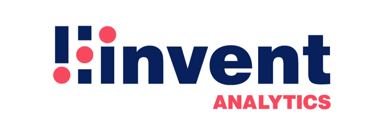Job Requisition Checklist
A job requisition checklist is a tool used by hiring managers and human resources professionals in today's business world. It helps ensure that the process of establishing a new job position is comprehensive, effective, and compliant with relevant laws.
Nevertheless, what is a job requisition checklist and how does it support the process of creating a new job position?
In this content, the checklist below will give important points every organization needs to know about the job requisition process for the success in business life.
What Is a Job Requisition?
Department managers use the document called job requisition as a formal way to ask for permission to add a new member to their team. They do this to fill a recently empty position or establish a new role.
Usually, the department of human resources receives the request, evaluates it, and then sends it to the leadership team for its final approval. The hiring manager or recruiter utilizes the job requisition form to draft a job description and publish it on job listing websites, such as Linkedin and Glassdoor after it has been permitted by all relevant parties.
Job Requisition vs. Job Description vs. Job Posting
Many people frequently use these three terms interchangeably, but they are not the same. Even though they all play crucial roles in a company's recruitment process, they have distinct functions.
What Is a Job Requisition?
Formally asking for a new or additional role inside an organization is known as a job requisition. It outlines what the new hires require, such as responsibilities, duties, and needed qualifications. The hiring manager or HR generally creates it to begin the hiring process.
What Is a Job Description?
A job description also covers the duties, roles, and responsibilities of a job position. Nevertheless, it is a more thorough document that offers an exhaustive summary of the duties, responsibilities, and qualifications needed for a current role.
It gives a comprehensive understanding of the role and its needs to both prospective employees and internal stakeholders.
What Is a Job Posting?
A job posting is an announcement for a particular job opening that is available inside an organization. Companies often post job postings on company websites, job boards (e.g., LinkedIn and Indeed), and other online and offline platforms (e.g., magazines and newspapers).
They generally contain some important details such as a short description of the role, necessary qualifications, salary range, and how to apply.
Checklist
Give basic information.
Describe the job details.
Explain the rationale behind the recruitment.
Establish the salary range.
Arrange the interview process.
Post the job posting.
Allocate hiring budget.
Do final review and submission.
Plan onboarding and training.
Job Requisition Checklist
Give Basic Information
Organizations should begin by explaining important information about the job. Since the job title describes the position, they should make sure to include it clearly. A job description should include a list of essential responsibilities.
It is also important to indicate the department the new employee will be working in and the name of the hiring manager, who will be in charge of this process.
Professionals should include a job identification number (if any) to trace the request in the HR system. Specifying whether the position is contract, permanent, temporary or internship is also crucial in this process because prospective candidates want to know the employment type.
Describe Job Details
Companies should indicate if the job is a contract, internship, full-time, or part-time role. It is also critical to specify if the job will be done remotely, at an office, or in a hybrid setting while indicating whether the role is permanent or temporary with expected weekly or annual working hours.
They should give the new hires an approximate start date. When they should add any requirements for travel or shift patterns, like night work or alternating schedules, it is also significant to make it clear if the job permits remote work or flexible scheduling.
Moreover, it is necessary to inform them if the position requires working on weekends or on-call availability to help future employees establish a work-life balance.
Explain the Rationale Behind the Recruitment
Organizations should explain in detail why the company requires this role. They also should mention the name of the former employee if it is a replacement. If this is a new position, it is necessary to describe its creation and how it aligns with the objectives of the business.
Companies should explain the reallocation if the role is open due to a transfer of an employee. If the duties of the job have changed, they need to explain the changes. It is also a good idea to explain if the position improves team capabilities or supports a new project.
Establish the Salary Range
In the case of a replacement hire, companies should cite the salary of the prior employee as a reference. They should provide a salary range based on the policies of the company and industry standards. A competitive salary offer will play an important role in attracting talented candidates.
Besides, it is important to include benefits such as bonuses, stock options, and health insurance. Clearly defining salary expectations is an essential criterion for a good candidate experience.
Arrange the Interview Process
Companies should clearly explain the process for conducting the interview and indicate if walk-in interviews, internal hiring, or job postings on external platforms will be used.
They should indicate how many rounds of interviews there will be, who will manage them, and whether written tests, technical evaluations, or case studies will be required. It is also crucial to specify if one-on-one or panel interviews will take place, as well as the platforms, such as Zoom and Webex, that will be utilized for video interviews.
Manage the Approval Process Efficiently
Organizations should determine who has to approve the job requisition before hiring starts. Senior executives, department heads, and HR managers may fall into this category. A well-organized approval process guarantees that all decision-makers are on the same page and prevents delays.
Professionals should indicate which documents are necessary, like organizational charts, job descriptions, and budget reports, and whether an HR system, a specialized portal, or email will be used to track approvals.
Post the Job Posting
Professionals should choose where to post the job. To connect with many applicants, they can think about using social media, job boards, and the company’s website. Posting on internal job boards or using employee referrals may also help attract qualified candidates.
It is also essential that the job posting includes important details such as benefits, salary range, and responsibilities.
Allocate Hiring Budget
It is vital to guarantee that the hiring budget covers onboarding costs, salary, and benefits. Additionally, hiring can also include paying for training, job ads, and recruitment fees. It is also critical to verify if approval from the finance department is required.
Do Final Review and Submission
Professionals need to verify all the information one last time before sending in the job requisition. At this stage, they should check that the job description, title, salary, and schedule comply with the policies of the company. A well-written job requisition avoids delays and expedites the approval process.
To make sure all the information is correct, there should be a final review meeting with the recruiting manager and HR. Use this checklist to ensure that nothing is overlooked before submission!
Plan Onboarding and Training
Companies should arrange for the new hire's training and team introduction since a successful onboarding can increase overall productivity and job satisfaction.
They should indicate who will be in charge of training and specify the anticipated onboarding time. It is also significant to discuss whether the organization offers job shadowing programs, initial projects or mentorship opportunities.
Conclusion
In this content, before checking the job requisition checklist, you have discovered what job requisition is, and the differences between job requisition, job description, and job posting. Thanks to this checklist, you can complete the job requisition process in the fastest and easiest way.
Although the job requisition checklist is important for business life, there is still much to learn as an employer, HR professional, or just someone interested in HR topics. If you want to advance your career with HR subjects, visit Hirex now!
Contents
Get a demo
- Quickly find top candidates with smart application management
- Improve team collaboration using built-in communication and workflows
- Offer a smooth candidate experience to strengthen your employer brand
- Count on 24/7 support for a hassle-free hiring process
- Quickly find top candidates with smart application management
- Improve team collaboration using built-in communication and workflows
- Offer a smooth candidate experience to strengthen your employer brand
- Count on 24/7 support for a hassle-free hiring process
"We truly felt the speed difference. Everything was smoother, and candidate feedback was much more positive. It made our jobs easier."

Trusted by 100+ teams
Get Informed,F.A.Q.
Revolutionize your hiring process with our transformative Applicant Tracking System (ATS.)















